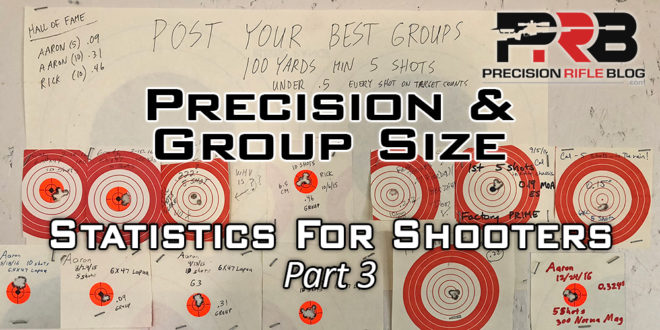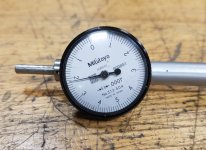Things were getting so far off topic so rather then clutter the good conversation over there I'll start a new discussion.
The main question is if your shooting long range with a 22lr is ammo testing at 100 yards and closer ideal?
Or should you be testing at 200 yards?
My experiences have persuaded me that for testing long range performance requires testing at 150 yds or more.
I am not a BR shooter and will not pretend to be.
Rifle in question is a RimX with a 26" IBI barrel and calfee 4 chamber in a MDT ACC chassis. Shooting is done prone off of a Atlas cal bypod and a rear bag. Properly set up I have a almost perfect return to POA.

My testing method is as follows.
First I foul the bore with the new ammo type by confirming drop at 200 yds on a steel plate 10 rounds
The I shoot 10 shot groups at 50 yards typically 3
I then shoot 20 shot groups at 200 yards typically 2-3.
If its obvious the ammo is a no go I'll stop at 1.
I will then repeat this process a second day.
I may go back and shoot several 200 yard groups with the top few to confirm depending on results.
A few concerns to address.
Consistency of shooting fundamentals is very crucial. I have shot 1000s of rounds at 50 yards simply messing with my position to ensure a consistent POI. I have never shot from a bench so dont know how that compares. But am confident I can be consistent now.
Wind and the effects particularly at long range.
I shoot in a open field and live beside a wind turbine. When the "upper" wind and ground wind are the same direction we have fairly consistent conditions. A average day is 8-10 mpr wind. On a nice day it will normally be a 4-6 mpr wind. I'm setup so that the prevailing wind is 8-9 o'clock. I do not shoot over flags I tried but it makes my head hurt... not sure how you guys do that!
Due to always having some form of wind to deal with when testing at longer ranges I only compare the vertical group size.
I wondered if a wind changes vertical group size so I ran a small test. My results show the same vertical size regardless of wind speed if close to a 9 o'clock. The difficult part is keeping POI on paper with gusts.
Being mag fed I can quickly shoot a condition. I will first figure out if we have long gusts or lulls then I will start shooting as we enter a lull or gust for the longest shooting window.
Reading Groups.
I look at the SD of the long range groups as this eliminates the fliers skewing the results and gives me the "odds" of hitting. Typically 4x the SD is the ES so my 20 shot group ES should cover 90% of my shots.
Expensive ammo seldom shoots better then mid level ammo at 200 yds. But the better ammo has less fliers usually. This is not always the case. When the better ammo doesnt shoot as good as the mid level normally its a uniform group not just a flier that makes it worse.
At 50 yds the expensive ammo basically always wins.
I can have two ammo that shoot 1 moa at 50 but at 200 one is 1.6 and the other 3.5 moa
What are your results from testing ammo? What is your test procedure for a long range rig?
The main question is if your shooting long range with a 22lr is ammo testing at 100 yards and closer ideal?
Or should you be testing at 200 yards?
My experiences have persuaded me that for testing long range performance requires testing at 150 yds or more.
I am not a BR shooter and will not pretend to be.
Rifle in question is a RimX with a 26" IBI barrel and calfee 4 chamber in a MDT ACC chassis. Shooting is done prone off of a Atlas cal bypod and a rear bag. Properly set up I have a almost perfect return to POA.
My testing method is as follows.
First I foul the bore with the new ammo type by confirming drop at 200 yds on a steel plate 10 rounds
The I shoot 10 shot groups at 50 yards typically 3
I then shoot 20 shot groups at 200 yards typically 2-3.
If its obvious the ammo is a no go I'll stop at 1.
I will then repeat this process a second day.
I may go back and shoot several 200 yard groups with the top few to confirm depending on results.
A few concerns to address.
Consistency of shooting fundamentals is very crucial. I have shot 1000s of rounds at 50 yards simply messing with my position to ensure a consistent POI. I have never shot from a bench so dont know how that compares. But am confident I can be consistent now.
Wind and the effects particularly at long range.
I shoot in a open field and live beside a wind turbine. When the "upper" wind and ground wind are the same direction we have fairly consistent conditions. A average day is 8-10 mpr wind. On a nice day it will normally be a 4-6 mpr wind. I'm setup so that the prevailing wind is 8-9 o'clock. I do not shoot over flags I tried but it makes my head hurt... not sure how you guys do that!
Due to always having some form of wind to deal with when testing at longer ranges I only compare the vertical group size.
I wondered if a wind changes vertical group size so I ran a small test. My results show the same vertical size regardless of wind speed if close to a 9 o'clock. The difficult part is keeping POI on paper with gusts.
Being mag fed I can quickly shoot a condition. I will first figure out if we have long gusts or lulls then I will start shooting as we enter a lull or gust for the longest shooting window.
Reading Groups.
I look at the SD of the long range groups as this eliminates the fliers skewing the results and gives me the "odds" of hitting. Typically 4x the SD is the ES so my 20 shot group ES should cover 90% of my shots.
Expensive ammo seldom shoots better then mid level ammo at 200 yds. But the better ammo has less fliers usually. This is not always the case. When the better ammo doesnt shoot as good as the mid level normally its a uniform group not just a flier that makes it worse.
At 50 yds the expensive ammo basically always wins.
I can have two ammo that shoot 1 moa at 50 but at 200 one is 1.6 and the other 3.5 moa
What are your results from testing ammo? What is your test procedure for a long range rig?


